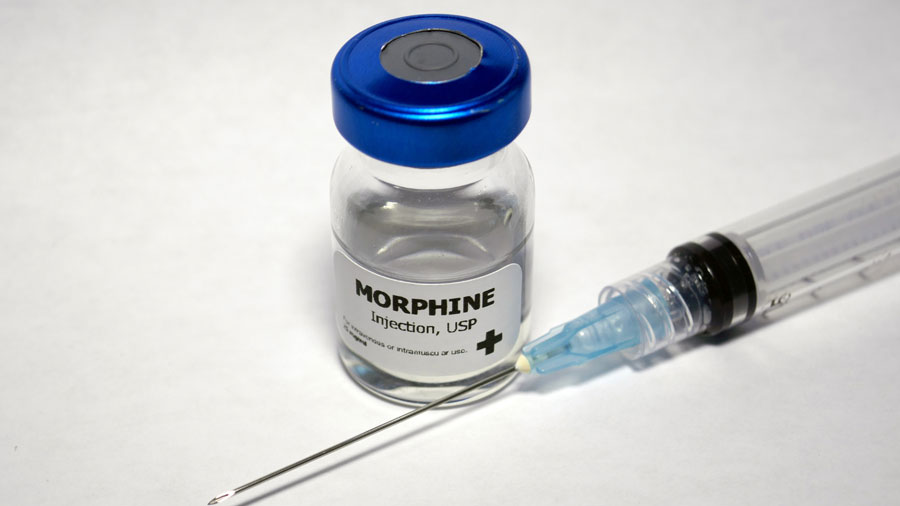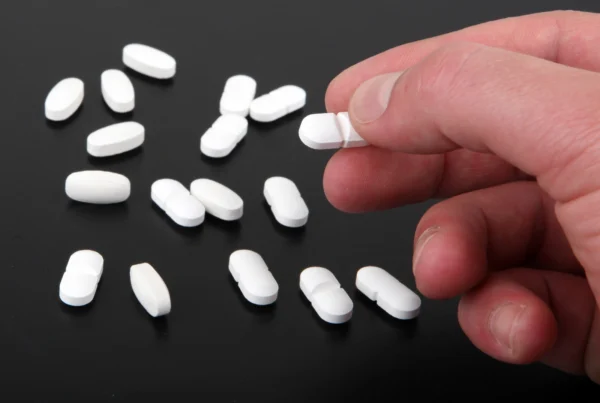
Table of Contents
Key Points
- Derived from the latex of opium poppies, morphine is a narcotic used to treat severe pain.
- Morphine is addictive due to how it affects the brain’s pleasure center.
- Morphine is a Schedule II drug according to the Controlled Substances Act
- This drug is usually administered via intravenous or oral routes.
Morphine is an opioid narcotic with pain relief effects that last between four and six hours. However, the drug is detectable in your system between three and 90 days, depending on the drug test used.
How Long Does Morphine Stay In Your System?
Morphine is detectable in the urine between two and five days.[1] Saliva tests detect it between one and 36 hours.
Hair follicle tests detect it up to 90 days after its last use. These time frames may differ depending on the individual’s metabolism and the test’s accuracy.
Brand names for morphine include MS-Contin®, Kadian®, Roxanol®, and RMS®. Morphine’s highly addictive nature is underlined by its Schedule II drug status. It is usually an injectable liquid, but there are capsule versions available.
Morphine Half-Life
Morphine’s half-life is between two and three hours.[2] The half-life refers to how long it takes for half of the active drug to be eliminated from your system.
It is necessary to administer more morphine for pain treatment once the drug starts wearing off. The drug’s short half-life is one of many factors that make it addictive.
Morphine Drug Testing
Drug tests vary in accuracy depending on what bodily substance they are testing. Urine and hair follicle tests are common. Many employers prefer hair follicle tests since they offer the longest drug history.
Saliva, sweat, and blood tests may also be useful when searching for recent drug use. Drug tests are important since opioid abuse has increased in recent years.
Urine Test
Urine tests are one of the most common options used by employers to test employees. They are easy to conduct. The employee urinates into a cup (usually under supervision), which is then tested. Morphine can stay in the urine for up to five days, and 2,000 ng/mL of morphine is the cutoff point for most tests.[3]
If a person’s urine concentration is below this point, the amount of morphine they have in their system is considered safe for the workplace. If the concentration exceeds the cutoff point, the employee cannot safely work in that environment. This may also indicate a substance use disorder.
Blood Test
Morphine is not detectable in the blood after 12 to 24 hours. This is why most people don’t do drug tests using blood. They are only reliable when testing for very recent drug use.
This test may be utilized when testing a person involved in a recent crime. The test can check if the person was intoxicated when they committed the act.
Hair Test
Hair follicles hold onto drugs for up to 90 days. This makes them very reliable when searching for long-term drug use. A hair is plucked from the head and tested to determine the morphine concentration.
The 2,000 ng/mL limit allows plenty of wiggle room to avoid false positives. Certain foods, such as poppy seeds, can release morphine into the system. The limit of 2,000 ng/mL is far too high to be the result of poppy seed consumption. It instead paints an accurate picture of morphine abuse. Hair follicle tests may also indicate the presence of other drugs such as marijuana in your hair.
Saliva Test
Morphine can stay in your saliva for 3 days. A swab is placed between the cheek and gum for a few minutes. The swab absorbs the saliva and is then ready to be tested.
Those with fast metabolisms may clear the drug from their saliva faster than others.
What Drugs Interfere With Morphine Drug Testing?
Morphine is an opiate, and other opiates can interfere with morphine tests. Methadone, codeine, sulpiride, and dihydrocodeine can all interfere.[4] Naloxone, quinolones, ofloxacin, and rifampicin can also cause problems.
Morphine Uses
Morphine is a narcotic derived from opium designed to treat severe pain. It is often used to dull pain after surgeries. It is also used for those suffering from cancer, AIDS, and chronic pain.
Long-term prescription morphine use may lead to dependence, tolerance, and addiction. Morphine misuse may make these issues more likely. Morphine is also used off-label for arthritis, chest pain, muscle pain, and severe headaches.
How Does Morphine Work?
Morphine works when it binds to the central nervous system’s mu-opioid receptor.[5] It activates inhibitory nerve pathways within the nervous system, which blocks pain. It also inhibits the pain receptors in the peripheral nervous system.
This reduces pain and causes euphoria.
Is Morphine Addictive?

Symptoms of Morphine Addiction
Addiction symptoms include physical and psychological dependence, tolerance, and decreased hunger.[6] Cravings, withdrawal symptoms, and cognitive changes may result. Long-term morphine use can destroy the internal organs and parts of the brain. Those addicted to morphine may also turn to other drugs to achieve the “high.”
Morphine Addiction Treatment
Morphine is a difficult drug to stop taking because it rewires the brain and causes dependence. Recovering with the help of professionals is the safest and most effective option.
Men and Women’s Programs
Programs specifically for men and women can help them better understand their addictions. These programs specialize in providing patients with insights and skills to put them on the road to recovery. Resources such as yoga, spirituality groups, and family counseling can help people cope with their problems.
Individual therapy, group therapy, CBT, and family therapy are also substantial. They can help you form better relationships, understand yourself, and lead a more productive life.
Detox
The detox process is the most essential and unpleasant part of recovery. Withdrawal symptoms include fever, chills, nausea, mood changes, and anxiety. Withdrawing alone can be dangerous and potentially fatal.
Detoxing in a medically-supervised center ensures the process is as safe and comfortable as possible. Medically-assisted treatment is also available to reduce the severity of the symptoms. Once detoxing is over, you can focus on the more pleasant and revitalizing aspects of recovery.
Mental Health Treatment
Mental health problems often spur the development of substance abuse disorders. Those who are depressed or anxious may abuse drugs to escape their problems. Getting to the root of your mental health issues can help you overcome them and leave your drug problems behind.
Treatment options include CBT, group therapy, family therapy, individual therapy, and mindfulness. They can give you the support and confidence you need to succeed on your path to recovery. Yoga and meditation are also helpful.
Inpatient Rehab
Many people expect drug rehab to be unpleasant, but it doesn’t have to be. A luxury rehab allows you to be in a tranquil and healthy environment near the beach. You can enjoy the sun, fresh air, and outdoor activities.
Surf therapy is one of many options that this program includes. Every patient’s unique needs are taken into consideration. This ensures that you receive the best care and support. Men and women are housed in different areas with comfortable furniture and amenities.
There Is Always Hope
Being addicted to morphine can seem hopeless. The drug may always drag you back, even if you want to quit. But professional substance abuse treatment can help. With the right treatment and support, you can get your life back on track and leave your drug problems behind you.
There is a Better Way to Live. Its Time to Get the Help You Deserve.
Contact UsFrequently Asked Questions About Morphine Use
Below are some of the most frequently asked questions surrounding morphine.
OCEAN RECOVERY EDITORIAL GUIDELINES
The internet contains a vast amount of misinformation, but when it comes to your health only peer reviewed, research centered data matters. At Ocean Recovery, all content published throughout our website has been rigorously medically reviewed by a doctorate level clinician, and cross checked for medical accuracy. Our editorial process helps our readers trust that the information they are consuming is factual and based upon scientific data. Your health is our top priority, find out more about how we safeguard the integrity of information on our website. Read More About Our Process




